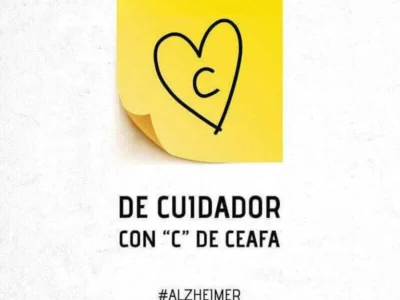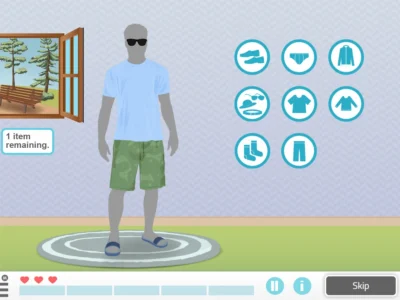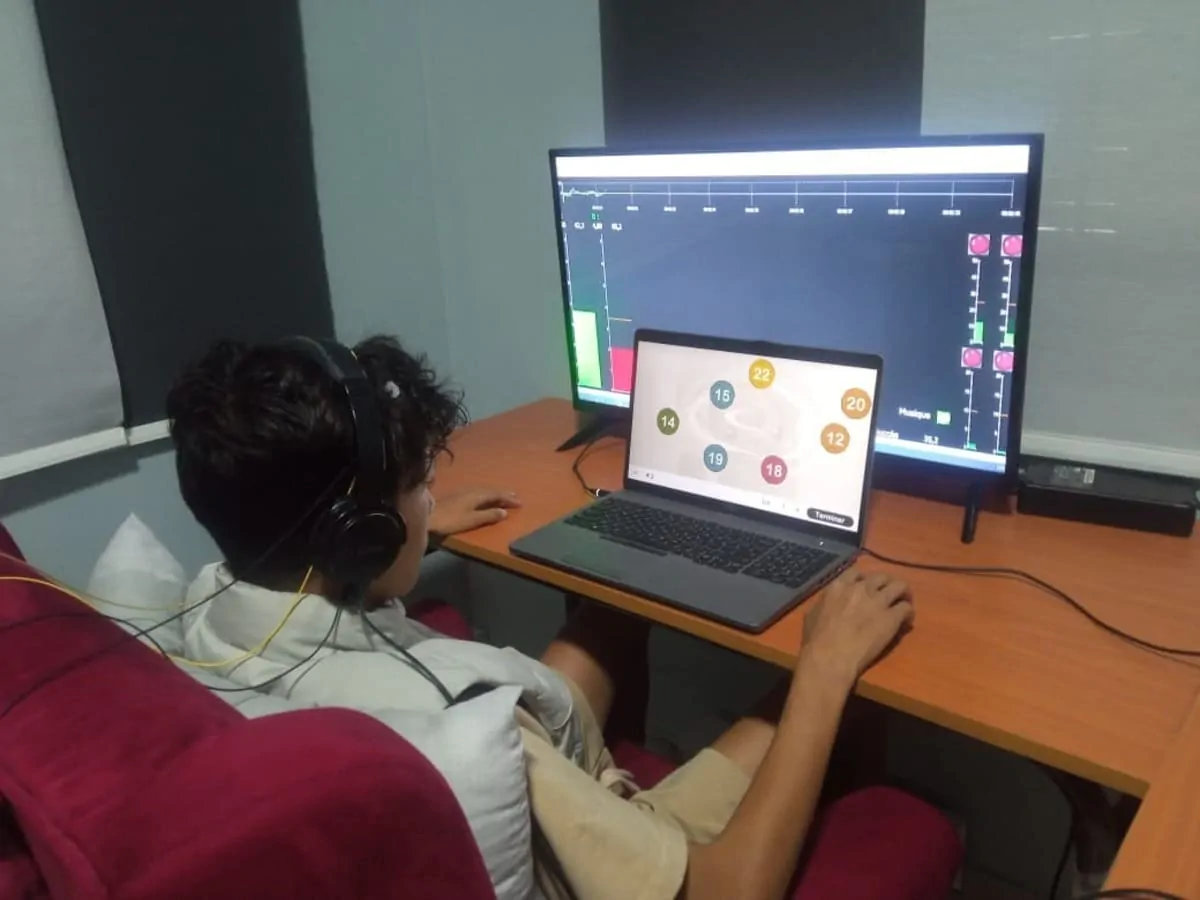Javier Esteban Libiano, neuropsychologist, explains in this article what a cerebrovascular accident or stroke is and what types of aphasia affected people may face.
Cerebrovascular accident or stroke, what it is
The CVA or cerebrovascular accident, colloquially known as a stroke, refers to any disorder in brain functioning caused by a pathological condition of the blood vessels.
After a cerebrovascular accident, one of the consequences that may be observed is the loss or difficulty in the ability to use language in patients. We call this symptomatology aphasia and its main characteristic is a deficit in verbal communication, characterized by errors in language production and comprehension. From neurorehabilitation and through tools used by neuropsychology we can intervene in this situation to promote recovery and the rehabilitation of patients who have suffered the mentioned pathology.
The cerebrovascular accident (CVA), also called stroke, cerebral infarction, apoplexy, brain attack or cerebral hemorrhage, is defined as a disorder of cerebral circulation that is divided into two types:
- Ischemic stroke, of abrupt onset, which occurs due to arterial occlusion, that is, an artery becomes blocked by a clot or an embolism. It represents approximately 85% of cases.
- Hemorrhagic stroke, which occurs after the rupture of an artery, aneurysm, with the consequent leakage of blood outside its usual course.
Incidence of stroke
Global incidence of stroke
It is estimated that one in six people worldwide will suffer a stroke during their lifetime. Stroke remains a global public health problem, associated with high mortality and disability if not properly treated. It is the leading cause of death in women and the main cause of disability in Europe.
Incidence of stroke in Spain
In Spain, according to data extracted from the 2023-2024 Annual Report of the National Health System, cerebrovascular disease affects 1.6% of the population in Spain, with prevalence highest from age 40 onward, and affecting more than 10% of the population over 85 years. It can occur at any age, although prevalence is higher in men in all age groups except in the 25 to 44 age group, which is slightly higher in women. Nevertheless, mortality from cerebrovascular disease has followed a downward trend since 2012, reaching in 2022 the lowest values in the series: 44.0 per 100,000 inhabitants. In addition, it is a disease that brings enormous psychological suffering, limitations in basic activities of daily living, such as eating or bathing, and in instrumental activities, such as taking public transport or managing finances. Likewise, it generates an impact in all other spheres of life, such as social, occupational…
Forecasts indicate that the incidence of cerebrovascular accident will continue to increase due, among other causes, to the aging of the population. Thus, it is estimated that between 2015 and 2035 the number of people who will suffer a cerebrovascular accident (CVA) will exceed four and a half million people in the European Union (EU), which will represent a global increase of 34% in the total number of CVA patients in the European region.
Risk factors for stroke
Up to 90% of strokes could be prevented by controlling modifiable risk factors:
- arterial hypertension,
- diabetes,
- smoking,
- obesity,
- hypercholesterolemia,
- sedentary lifestyle,
- alcohol consumption,
- psychosocial factors such as stress,
- and previous heart disease.
Diagnosis and treatment of stroke
Early diagnosis and treatment are decisive to improve survival and chances of recovery for the patient suffering a cerebrovascular accident.
On April 10 of this year 2024, the Ministry of Health together with the Autonomous Communities approved the update of the National Health System Stroke Strategy, which was published in 2009 and established the improvement objectives at all levels of healthcare for this disease.
The approach to CVA must be from a comprehensive, interdisciplinary, coordinated, and person-centered perspective. Neurorrehabilitation treatments and addressing needs in life after stroke are crucial to reduce functional disability and improve the quality of life of people who have suffered a stroke. Neuropsychological rehabilitation can address the deficits after a CVA episode.
Depending on the area affected of the central nervous system, one of the consequences that may occur after a CVA are the aphasias, among many other sequelae, which are defined as an alteration of the ability to use language, a language disorder that produces difficulties in reading, writing, expressing oneself orally and/or understanding what others want to convey orally.

Subscribe
to our
Newsletter
Aphasia after CVA
What types of language errors do patients with aphasia present?
After a CVA affected people may present difficulties in verbal communication, characterized by errors in production, failures in comprehension and/or difficulties finding words (anomia). Possible errors are: grammatical, in verbal articulation, in fluency of word production, in comprehension… This occurs after damage to the regions of the brain that control language.
Verbal ability is a lateralized function. The majority of language abnormalities occur after a lesion to the left side of the brain, whether the person is left- or right-handed. If the left hemisphere suffers a malformation or damage at an early stage of life, it is very likely that hemispheric dominance for language will shift to the right hemisphere (Vikingstand et al., 2000), which leads us to rely on the theory of brain neuroplasticity, which indicates that the central nervous system can be reshaped, restructured, readjusted, reconverted…and therefore other brain structures can assume functions that were performed by regions that have suffered damage.
Brain areas related to language
The main brain areas related to language include:
- El Broca’s area, which is located in the frontal part of the brain and is responsible for speech production and word formation.
- The Wernicke’s area, located in the posterior part of the brain, temporal lobe, and is responsible for language comprehension.
- The angular gyrus, situated in the lower part of the parietal lobe and responsible for reading and writing.
More extensively in the neuroanatomical organization of language the following would be involved:
- The area 44 and 45 of Brodmann or Broca’s area, in the frontal lobe.
- The area 22 of Brodmann or Wernicke’s area, in the temporal lobe.
- Areas 39 and 40 of Brodman or parieto-temporo-occipital junction, in the occipital lobe.
- Areas 17, 18 and 19 of Brodmann or primary, secondary and association visual areas, in the occipital lobe.
- The prefrontal cortex.
- Polysubcorticality specifically the basal ganglia; caudate, putamen and pallidum.
- Leucosubcorticality; the intrahemispheric and interhemispheric fasciculi.
- Thalamus; pulvinar nuclei and dorsomedial nucleus.
- Midbrain, pons, medulla oblongata, cerebellum and the spinal cord.
Neurorehabilitation of aphasias after CVA
Through neurorehabilitation we can intervene in this type of deficits that may appear after a cerebrovascular accident, with the intention of alleviating them and improving their symptomatology with the consequent influence on improving patients’ autonomy and independence.
Language intervention must be approached with a compartmentalized perspective, since we must intervene in different skills: oral expression, oral comprehension, written expression and written comprehension. While also attending to prosody, tone, rhythm, volume…
As we indicated in the previous paragraph, language is divided into four dimensions:
- Oral expression, defined as all communication carried out by means of speech. In an in-depth analysis, oral expression includes conversational language, reflex or repetition language, automatic sequences, recited singing and rhythm, naming and narrative language.
- Oral comprehension, which is an active skill that activates a series of linguistic and non-linguistic mechanisms and involves developing the ability to listen to understand what others say. Oral comprehension consists of phonemic hearing, word comprehension, comprehension of simple and complex sentences, and comprehension of logical-grammatical structures.
- Written expression, which consists of expressing, by means of conventional signs and in an orderly way, any thought or idea. Written expression adds the mechanics of writing, serial writing, dictation of isolated letters, dictation of numbers, dictation of words and sentences, copying, finding written words, sentence construction and narrative writing.
- Written comprehension which is the ability to understand what is read, both in reference to the meaning of the words that make up a text and with respect to the overall comprehension in a written piece. Written comprehension consists of symbol and word discrimination, phonetic association, and reading of sentences and paragraphs.
When addressing language rehabilitation, as a fundamental cognitive skill in people’s lives, the neurorehabilitation tools available to neuropsychology can be of great help to approach, from a multidisciplinary perspective, the symptomatology produced after a cerebrovascular accident (CVA).
Bibliography
- Fernández, A. Hernández, T. Simal, P. Castellanos, M. García, M. (2022). Día mundial del ictus. Revista española de salud pública, 96
- Ministerio de Sanidad, S. D. S. I. (2020). Informe Anual del Sistema Nacional de Salud 2020-2021. Informes, Estudios e Investigación 2022.
- N. Carlson. (2006). Fisiología de la conducta. Pearson, Madrid
- Perea, M.V. Ardilla, A. (2005). Síndromes neuropsicológicos. Amarú, Salamanca
- Perea, M.V. Ladera, V. Echeandia, C. (1998) Neuropsicologia libro de trabajo. Amarú, Salamanca
- Vikingstad, E. M., Cao, Y., Thomas, A. J., Johnson, A. F., Malik, G. M., Welch, K. M. A. (2000).Language hemispheric dominance in patients with congenital lesions of eloquent brain. Neurosurgery, 47, 562–570
If you liked this blog post about aphasia after CVA: causes, types and rehabilitation, you will likely be interested in these NeuronUP articles:
“This article has been translated. Link to the original article in Spanish:”
Afasia tras ACV: causas, tipos y rehabilitación







 Awake craniotomy for brain tumor surgery: procedure, benefits, and advances
Awake craniotomy for brain tumor surgery: procedure, benefits, and advances
Leave a Reply